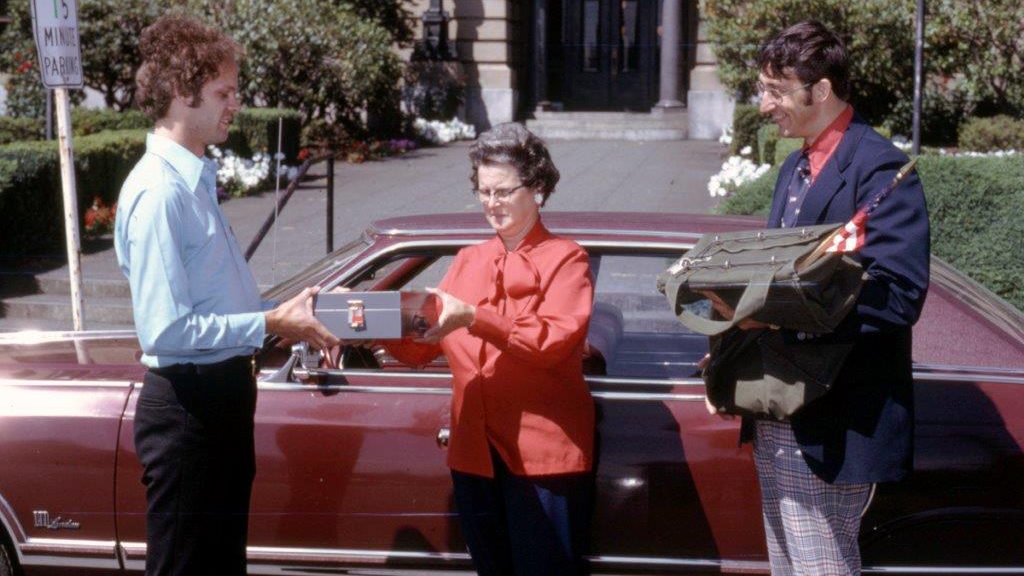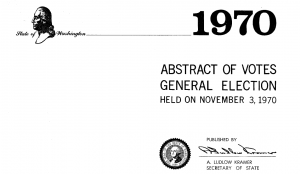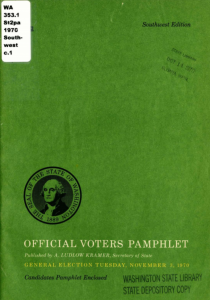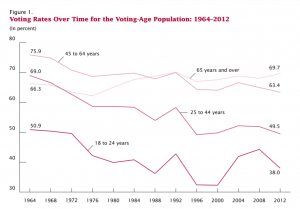
How the 1970 election set Washington’s midterm turnout record
 The county-certified election returns for the 2018 General Election came very near setting a new state record for voter participation in a non-Presidential election cycle.
The county-certified election returns for the 2018 General Election came very near setting a new state record for voter participation in a non-Presidential election cycle.
Of the 4,362,454 people on Washington’s voter rolls, 71.83 percent cast ballots, which was just under the 71.85 percent turnout for the 1970 midterm General Election. Had just 1,101 more Washingtonians voted, that 48-year-old record would have been eclipsed.
That the 1970 turnout stands as the state’s high-water mark is noteworthy in several regards.
First, the record is only verifiable for part of Washington’s history. For nearly five decades after statehood in 1889, voter registration was decentralized. County auditors administered voter rolls in unincorporated areas, and city clerks managed their own lists. Thus, while we know how many Washingtonians voted in elections before 1936, we are unable to conclusively state how many were eligible to vote.
Exploring the historical statistics further, the 1970 turnout only looks exceptional in hindsight. For two decades up to that point, every Washington state midterm General Election had drawn more than two-thirds of state voters to the polls. After 1970, that would only happen again in a midterm once in the next 40 years.
So what was the deal with 1970?

The ballot tells part of the story, as you can read in the 1970 Voters Pamphlet. Voters had a multitude of reasons to care intensely about the year’s issues. They were deciding on abortion referendum (which passed), an initiative to forbid any raise of state taxes (which failed), the U.S. Senate seat of Henry M. “Scoop” Jackson (who won with 83.9 percent of the vote, which the New York Times called a “nearly incredible margin”), and a proposal to change the voting age from 21 to 19.
The voting-age measure’s circumstances, failure, and afterlife comprise a political tale still reverberating. It grew from the political tumult of the 1960s, an era examined in fascinating detail in Legacy Washington’s new exhibit 1968: The Year that Rocked Washington.
With a national effort to lower the voting age to 18 to match the age for military draft eligibility playing out in court, Washington state political leaders put a state Constitutional amendment on the 1970 ballot to set the age at 19. The bipartisan campaign, detailed here, got just 45.3 percent of the vote. Months later, the U.S. Congress passed the 26th Amendment, which made 18-year-old voting national and permanent.
This change swelled voter rolls immediately as young Washingtonians took the fundamental civic step of registering to vote. Between the 1970 and 1972 elections, Washington’s registered voter total grew by 411,933, a 26 percent increase.

Turnout rates, however, ebbed.
Adding young adults to voter rolls is a different task than motivating them to vote regularly. The U.S. Census Bureau found a prolonged drop in participation rates by the youngest voters group in this graph and study from 2014.
Here in Washington, the influx of new registered voters in the early 1970s was followed by midterm turnout rates falling below 70 percent for a full 40 years.
The 2010 cycle broke the trend, and turnout for 2018 showed that Washingtonians’ civic engagement can again approach the levels seen in decades past. Like 1970, both those midterm elections had a U.S. Senate seat on the ballot to help attract voter interest.
The next midterm, in 2022, falls between scheduled Senate elections.